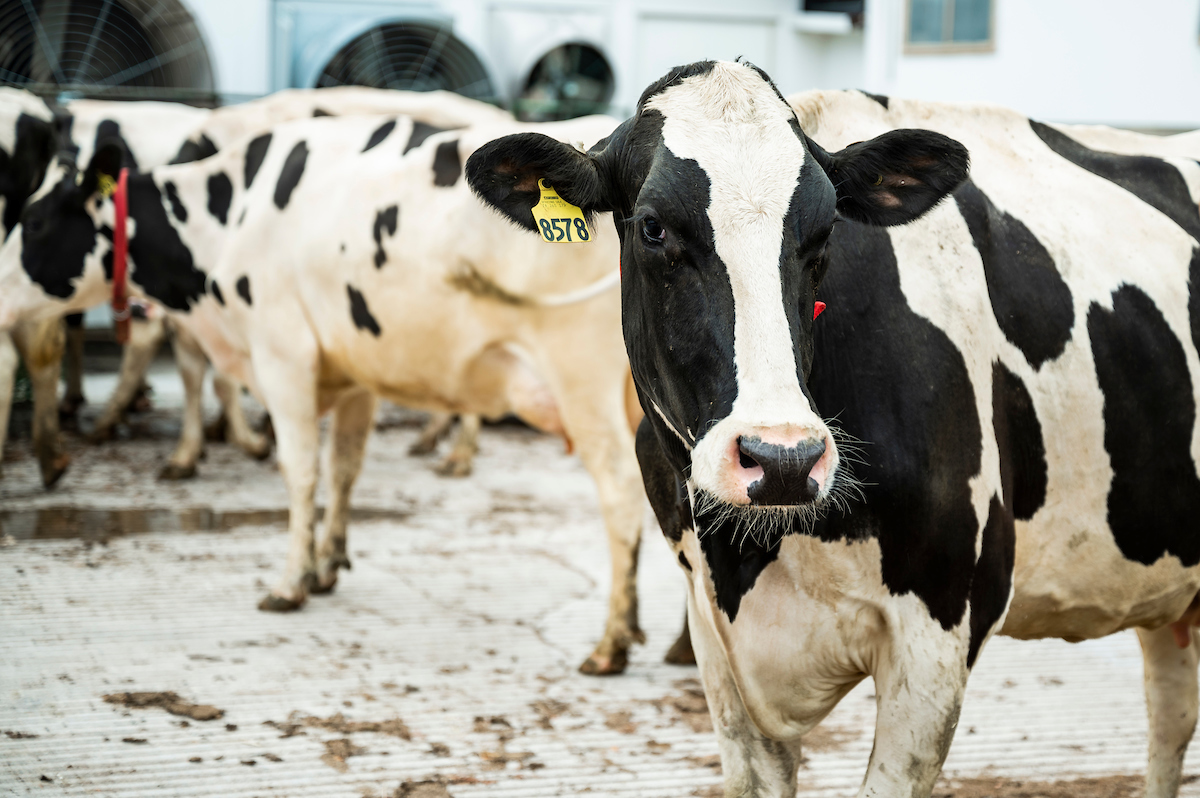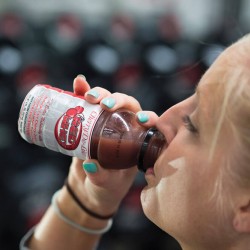
By using ultra-pasteurized milk, the students could make the product shelf-stable for up to six months, without refrigeration. Bryce Richter
In spring, a team of students in the College of Agricultural and Life Sciences (CALS) took on a job of redesigning a symbol of the Wisconsin economy that is close to the heart — or at least the lunch — of every grade-schooler: the classic half-pint milk carton.
The team, which included Caroline Lunning x’22, Neve Blanz x’22, Nathan Riehle x’22, and Mikayla Haack x’22, chose to do away with the cardboard carton and instead designed a milk pouch, “sort of like a Capri Sun juice pouch,” according to Lunning.
By using ultra-pasteurized milk, the students could make the product shelf-stable for up to six months, without refrigeration. A biodegradable freezer pack would enable students to chill room-temperature moo juice in moments. The contents of the pack could then be used as fertilizer.
Although ultra-high-temperature pasteurization uses more energy than regular pasteurization, the team members calculated that their product’s reduced need for refrigeration would save energy in the long run — between 547 and 652 kilojoules per kilogram of milk.
The milk pouch won’t be in markets soon, however.
“The economics aren’t there yet,” says Lunning. “Dairies are set up to use cartons, which can be made for less than a penny apiece.” Still, judges at a spring student design competition gave the milk pouch a “most creative” award.
Published in the Fall 2021 issue


Comments
No comments posted yet.